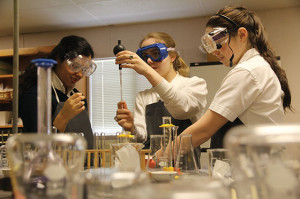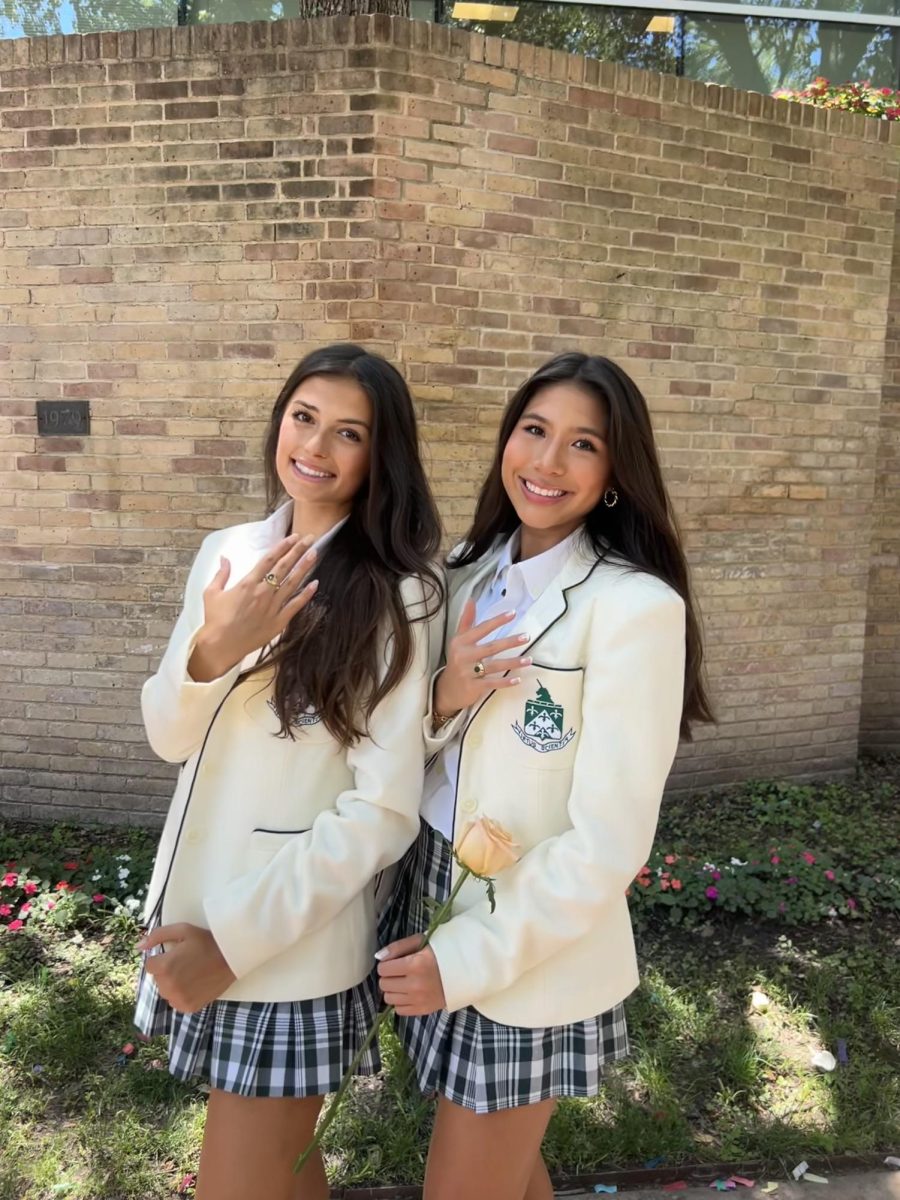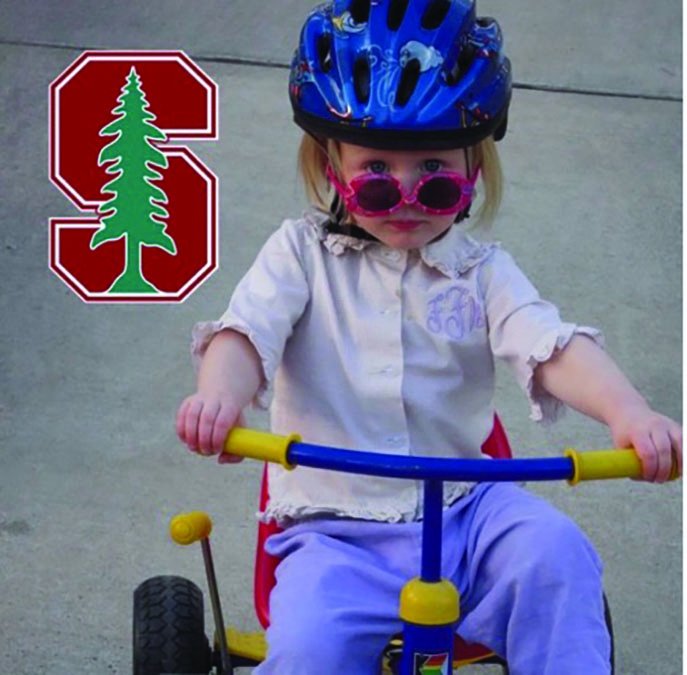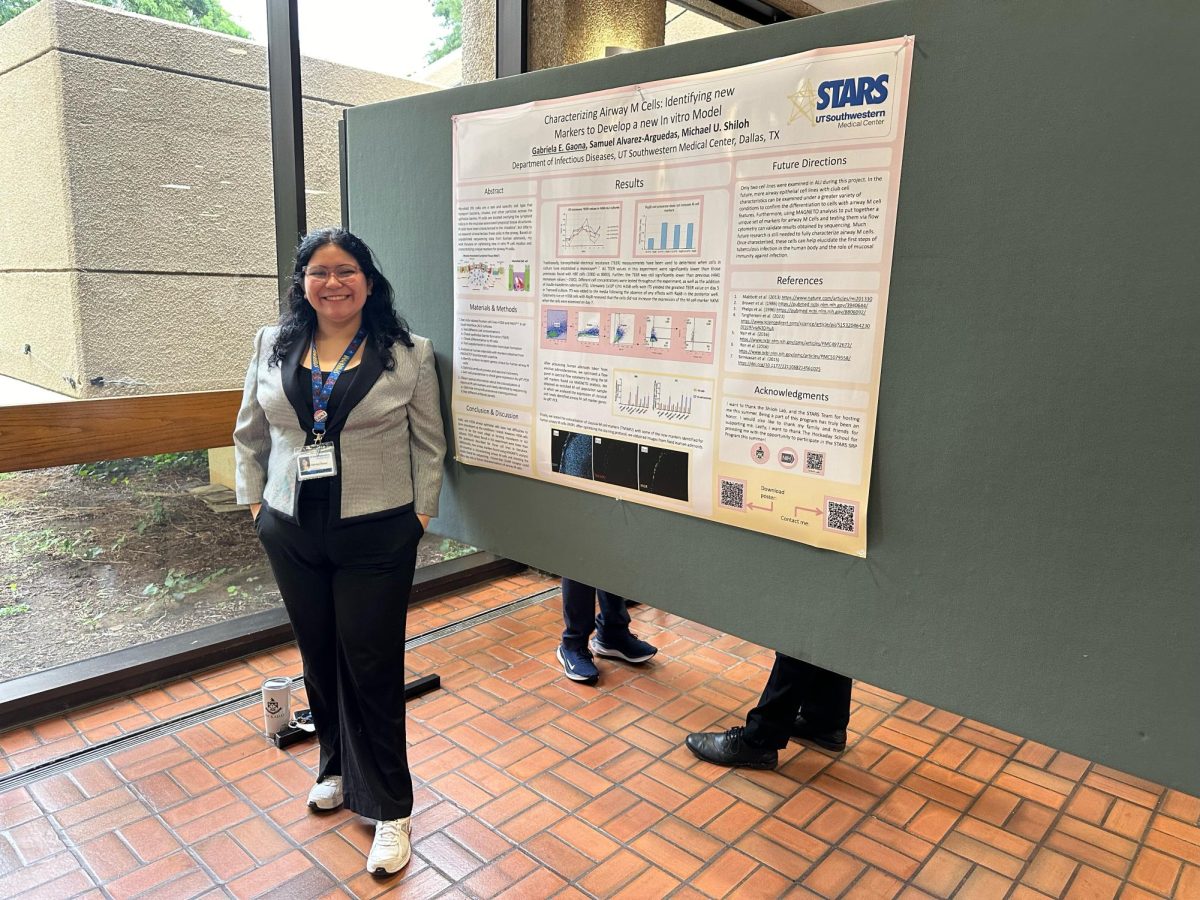
Seniors Shivani Sharma, Katherine Magee and junior Holly Haley don safety goggles in an Organic Chemistry class to ensure lab safety. Photo by Mary Clare Beytagh
After a Jan. 2 chemical explosion at Beacon High School in Manhattan, Science Department Chair Dr. Marshall Bartlett was in disbelief. “Why would anyone pour methanol on an open flame out of a gallon jug?” he asked. “You’ve got to be kidding me.” Bartlett shared this reaction with many of his colleagues. Upper School chemistry teachers Dr. Beverly Lawson and Ann Ojeda were similarly shocked.
In part because they could not believe such an inexperienced teacher would try to do a flammable experiment outside a ventilated hood. In part because they would never use methanol as an accelerant. And in part because a major accident like the one in New York has never happened at Hockaday in the 28 years Lawson has taught.
Skin lacerations, eye burns, chemical spills and even explosions are ever-present dangers in a chemistry lab. In Hockaday’s portable labs, however, safety is the most important thing, Lawson said.
Lawson, who describes herself as a stickler about goggles, passed on her experience to Ojeda, who was a part of the lab safety team at Texas A&M University and is now in her third year of teaching chemistry at Hockaday.
“It’s incumbent on teachers who have more experience in the lab to share that with younger teachers,” Lawson said. “I think every program is improved by having younger people with lots of energy and enthusiasm come in, but I think that the experience factor, especially as far as safety is concerned, is important.”
Ojeda requires her students to wear goggles and aprons after they cross the pylon, the beam in the chemistry portable that divides the classroom space from the lab space.
“And if they don’t,” Ojeda said, “I’m right there to holler at them.”
Ojeda and Lawson have teamed up to teach organic chemistry this year, which involves some more hazardous organic chemicals. The lab safety expectations, however, have not changed.
Senior Catherine McGeoch, who has previously taken chemistry and AP Chemistry, is in the organic chemistry class this year. “Part of our proposal is about how we are going to be safe with the chemicals we are using,” she said. In other words, in order to write the required lab proposals before beginning experiments, the students must look up the material data safety sheet (MSDS) for each chemical.
Lawson said that some younger, more inexperienced teachers conduct more showy experiments to get their students excited about science.
“As a teacher,” Ojeda said, “I never want to do anything just for the shock value. I want it to tie into what we’re doing, so you have to have a mastery of the chemistry.”
One of the more famous flashy experiments done in Hockaday chemistry, dubbed the Gummy Bear Experiment, involves potassium chlorate and a gummy bear, which together produce bright fire and a caramel-like smell as the sugar burns. Lawson and Ojeda said they always take proper precautions such as performing the experiment in a flame hood to reduce the associated risks such as burns or fume inhalation.
Other experiments, however, have been phased out of the curriculum because of the unnecessary hazards they pose to students. One such experiment, called the Ammonium Dichromate Volcano, used a little bit of ethanol (not as flammable as methanol) to burn the chemicals. Because the experiment uses hexavalent chromium, a known carcinogen, Lawson determined it was not worth the risk.
“We’re much more conscious of safety now than we were a generation ago,” Lawson said as she described her high school chemistry teacher, whose arms were covered in scars from lab accidents, “but some of those old experiments and demonstrations are still around.”
At Hockaday, the Physics Department does have a variation of the Rainbow demonstration, the experiment that caused the explosion at Beacon. However, instead of burning volatile metals using methanol, the students burn chemical salts over a propane flame under teacher supervision, which illustrates the same concept with less risk.
Bartlett said that the anxiety he feels about potential dangers in the lab is the same feeling he has when his own kids do something dangerous.
“Whenever they’re doing anything risky, your mind plays out all the worst case scenarios of what could go wrong,” he said.
In order to educate teachers about the potential dangers, all the Science Department faculty in Lower, Middle and Upper Schools completed an online laboratory safety program last year. The course gave Hockaday a price reduction in the school’s insurance policy.
The portable science buildings also went through a series of rigorous certifications over the summer. These included a number of regulations that codified spacing between buildings, proper ventilation, wastewater disposal and chemical storage. The buildings were laid out in such a way that the AP Chemistry portable, which houses all of the chemicals, is closest to the edge of campus on Welch Road. To meet regulations, the architects also installed ventilation ducts that connect the yellow flame cabinets directly to the outside.
All organic chemicals, acids and solids are stored according to storage guidelines from Flinn Scientific, a vendor of science supplies and educational resources.
The fire marshal gave the school only one warning about boxes being stored too close to the ceiling, Lawson said, but the problem was remedied immediately.
The only pieces of safety equipment the portable labs do not have are safety showers in the biology and chemistry portables and a prep room in which to store the chemicals. In case of emergency, if a shower were needed, the student would be flushed with water from the sinks, Bartlett said. He assures, however, that the new science building currently under construction will have these features installed.
Still, he believes this emphasis on safety can coexist with exciting science experiments.
“We want our students to be impressed by the science,” Bartlett said. “But there’s enough impressive science that you can safely steer clear of the things that are really dangerous and still have an impressive science program.”
– Mary Clare Beytagh













